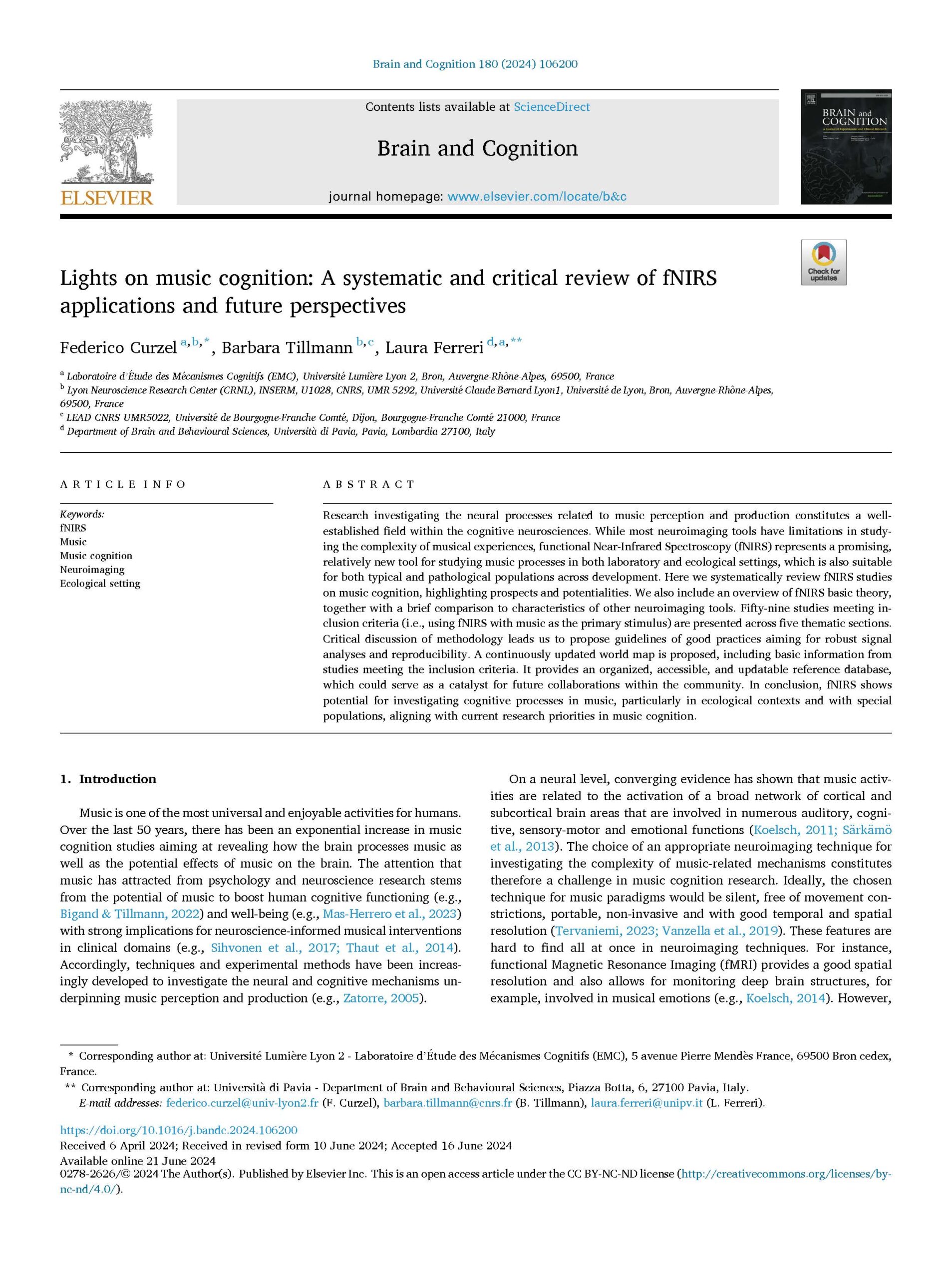Research investigating the neural processes related to music perception and production constitutes a well established field within the cognitive neurosciences. While most neuroimaging tools have limitations in studying the complexity of musical experiences, functional Near-Infrared Spectroscopy (fNIRS) represents a promising, relatively new tool for studying music processes in both laboratory and ecological settings, which is also suitable for both typical and pathological populations across development. Here we systematically review fNIRS studies on music cognition, highlighting prospects and potentialities. We also include an overview of fNIRS basic theory, together with a brief comparison to characteristics of other neuroimaging tools. Fifty-nine studies meeting inclusion criteria (i.e., using fNIRS with music as the primary stimulus) are presented across five thematic sections. Critical discussion of methodology leads us to propose guidelines of good practices aiming for robust signal analyses and reproducibility. A continuously updated world map is proposed, including basic information from studies meeting the inclusion criteria. It provides an organized, accessible, and updatable reference database, which could serve as a catalyst for future collaborations within the community. In conclusion, fNIRS shows potential for investigating cognitive processes in music, particularly in ecological contexts and with special populations, aligning with current research priorities in music cognition.
Lights on music cognition: A systematic and critical review of fNIRS applications and future perspectives
